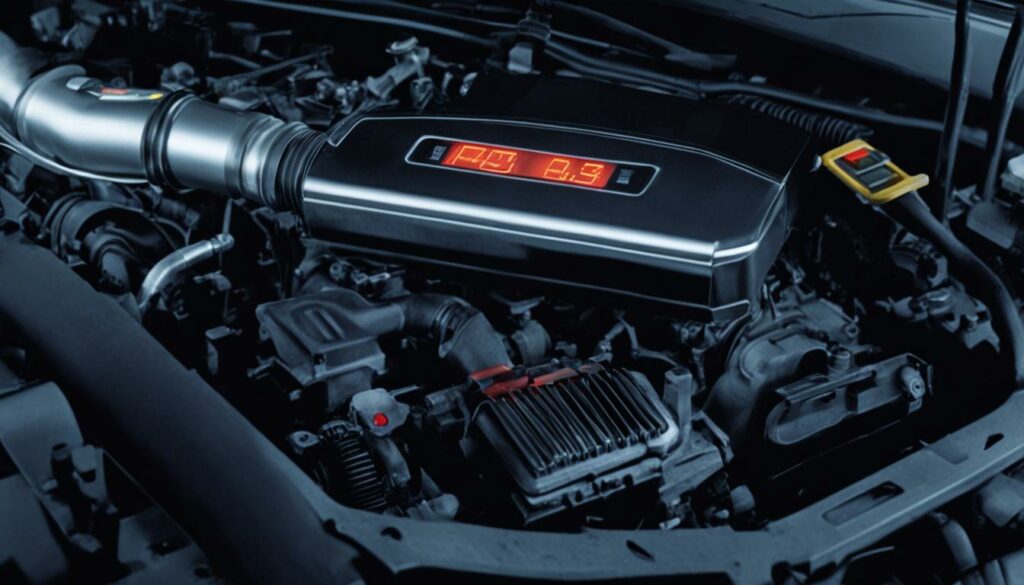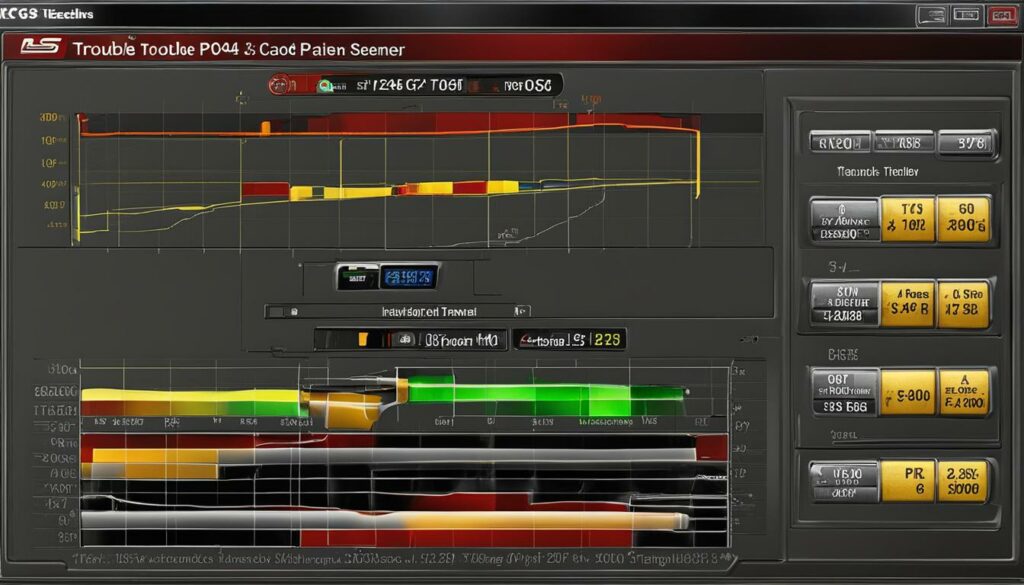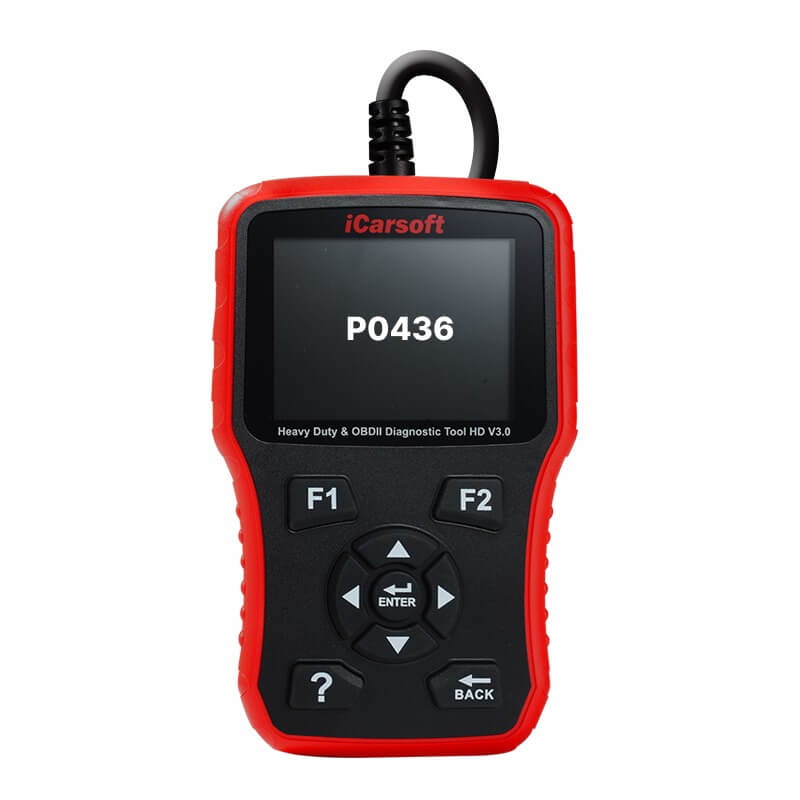P0436 – Catalyst Temperature Sensor Range/Performance Bank 2
POSTED IN pcodes
Welcome to our article series on common OBD-II diagnostic trouble codes. In this installment, we’ll be discussing the P0436 code, specifically related to the catalyst temperature sensor’s range or performance in bank 2 of the engine. Understanding the catalyst temperature sensor and its role in the efficient operation of the catalytic converter is crucial for diagnosing and resolving the P0436 code.
The catalyst temperature sensor plays a vital role in monitoring the efficiency of the catalytic converter. By comparing the oxygen sensor signals upstream and downstream of the converter, it determines if the converter is operating optimally. Any deviation from the expected temperature range or performance can trigger the P0436 code. This code is generic and applies to OBD-II equipped vehicles.
If your vehicle experiences the P0436 code, you may notice symptoms such as an illuminated check engine light, poor engine performance, decreased fuel economy, and increased emissions. The common causes of this code include a faulty oxygen sensor, wiring problems, exhaust air/fuel mixture imbalance, or a faulty PCM. Proper diagnostic and repair procedures are essential to resolve the code and ensure the efficient operation of your catalytic converter.
In the upcoming sections, we’ll explore the function of the catalyst temperature sensor, symptoms, causes, and the diagnostic and repair procedures to address the P0436 code effectively. Stay tuned!
Key Takeaways:
- The P0436 code relates to the catalyst temperature sensor’s range or performance in bank 2 of the engine.
- The catalyst temperature sensor monitors the efficiency of the catalytic converter by comparing oxygen sensor signals.
- Symptoms of the P0436 code include an illuminated check engine light, poor engine performance, decreased fuel economy, and increased emissions.
- Common causes of the P0436 code include a faulty oxygen sensor, wiring problems, or an exhaust air/fuel mixture imbalance.
- Diagnostic and repair procedures involve visual inspections, checking for technical service bulletins, testing the sensor’s operation, and checking the circuit for continuity.
What is the Function of the Catalyst Temperature Sensor?
The catalyst temperature sensor is a vital component of a vehicle’s emissions control system. Its primary function is to measure the efficiency of the catalytic converter, which plays a crucial role in reducing harmful emissions.
Buy tested tuning file for Adblue / EGR / DPF / Adblue off now!
The catalytic converter is a key part of the exhaust system that converts toxic gases, such as carbon monoxide, hydrocarbon, and nitrogen oxides, into less harmful substances like water and carbon dioxide through a chemical reaction.
The catalyst temperature sensor monitors the temperature of the catalyst within the converter and provides feedback to the powertrain control module (PCM). This feedback helps the PCM ensure that the catalytic converter is operating efficiently.
By comparing the signals from the upstream and downstream oxygen sensors, the PCM can determine if the catalytic converter is functioning optimally. If there is a deviation in the sensor signals, it could indicate a potential issue with the converter’s efficiency or performance.
Overall, the catalyst temperature sensor plays a critical role in maintaining the proper functioning of the emissions equipment and ensuring that the chemical reactions within the catalytic converter are carried out effectively.
Symptoms and Causes of the P0436 Code
The P0436 code can cause several noticeable symptoms in a vehicle. The most common symptom is the illumination of the check engine light on the dashboard. Other symptoms include poor engine performance, decreased fuel economy, and increased emissions.
The potential causes of the P0436 code include a faulty oxygen sensor, wiring problems, an exhaust air/fuel mixture imbalance, or a faulty PCM.
It is essential to perform a visual inspection of the oxygen sensor, check for loose connections or damaged wiring, and inspect the exhaust system for leaks. If any issues are found, they should be repaired or replaced accordingly.

Diagnosing and Repairing the P0436 Code
When facing the P0436 code, it is crucial to follow a systematic process to identify and resolve the underlying issues. The diagnostic procedures involve a series of steps designed to pinpoint the root cause of the problem.
- Visual Inspection: Begin by visually inspecting the oxygen sensor, focusing on loose connections, damaged wiring, and exhaust leaks. These visible issues can often be the source of the problem. If any abnormalities are detected, they should be repaired immediately. Clear the code, and retest the system to ensure the issue is resolved.
- Technical Service Bulletins: Check for any technical service bulletins issued by the manufacturer related to the P0436 code. These bulletins may provide valuable information regarding common causes and effective repair procedures. Staying informed about manufacturer recommendations can save time and effort during the diagnostic process.
- Scan Tool: Utilize a scan tool to test the sensor operation. Monitor the voltage parameter and observe the sensor’s response to different engine conditions. This test will help determine if the catalyst temperature sensor is functioning correctly or if there are any abnormal readings.
- Circuit Check: To ensure accurate transmission of sensor signals to the powertrain control module (PCM), it is essential to check the sensor circuit for continuity and proper grounding. Any interruptions in the circuit can disrupt communication between the sensor and the PCM, leading to the P0436 code.
If the above steps do not resolve the P0436 code, further investigation may be required to identify a faulty catalytic converter or other underlying issues. In such cases, consult a professional mechanic, who can provide comprehensive diagnostic services and recommend appropriate repairs or replacements.

Conclusion
The P0436 code, which pertains to the catalyst temperature sensor’s range or performance in bank 2 of the engine, can result in various symptoms and have different causes. It is crucial to understand the function of the catalyst temperature sensor and its role in ensuring the efficient operation of the catalytic converter.
Diagnosing and repairing the P0436 code involves conducting visual inspections, checking for technical service bulletins, using a scan tool to test the sensor operation, and inspecting the circuit for continuity and proper grounding. If necessary, repairs or replacements may be required for the faulty components.
Resolving the P0436 code is vital for maintaining the proper functioning of the vehicle’s emissions control system and ensuring the optimal performance of the catalytic converter. By addressing the symptoms, causes, and diagnostic and repair procedures associated with the P0436 code, vehicle owners can safeguard the efficient operation of their catalytic converter and minimize the impact on fuel economy and emissions.
FAQ
What is the P0436 code?
The P0436 code refers to the catalyst temperature sensor circuit’s range or performance issue in bank 2 of the vehicle’s engine.
What is the function of the catalyst temperature sensor?
The catalyst temperature sensor is responsible for monitoring the efficiency of the catalytic converter by comparing the oxygen sensor signals upstream and downstream of the converter.
What are the symptoms and causes of the P0436 code?
Symptoms of the P0436 code include an illuminated check engine light, poor engine performance, decreased fuel economy, and increased emissions. Common causes include a faulty oxygen sensor, wiring problems, exhaust air/fuel mixture imbalance, or a faulty PCM.
How is the P0436 code diagnosed and repaired?
Diagnostic procedures involve visually inspecting the upstream oxygen sensor and its wiring, checking for technical service bulletins, testing the sensor operation using a scan tool, and checking the circuit for continuity and proper grounding. If necessary, repairs or replacements may be required for the faulty components.
What is the significance of resolving the P0436 code?
Resolving the P0436 code is crucial for maintaining the proper functioning of the vehicle’s emissions control system and ensuring optimal performance.


